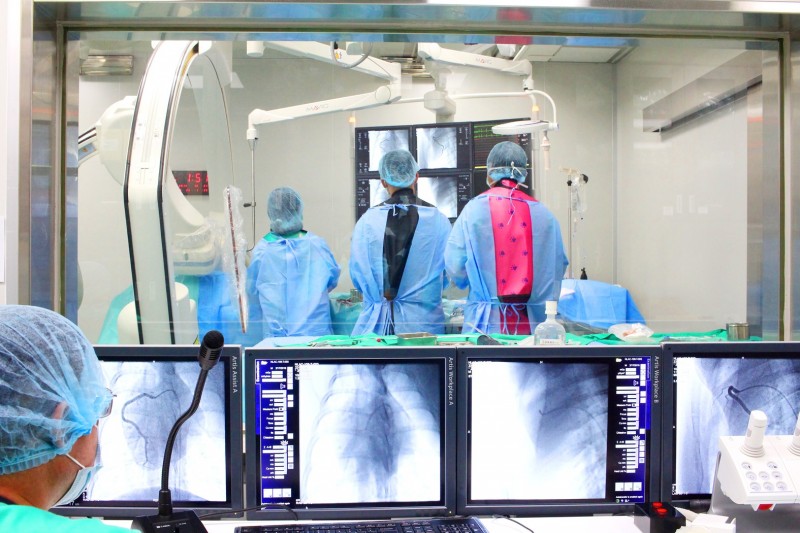《TAIPEI TIMES》 Animal imaging system could help humans

A two-way angiography system is pictured in an undated handout photograph taken at the National Laboratory Animal Center in Taipei. Photo courtesy of the National Laboratory Animal Center
By Lin Chia-nan / Staff writer
A blood vessel imaging system installed at the National Laboratory Animal Center could help researchers develop a treatment for cardiovascular disease in humans, the center said yesterday.
The center, based at the National Biotechnology Research Park in Taipei’s Nangang District (南港), is one of the National Applied Research Laboratories’ (NARL) eight centers.
Center director Yu Chun-Keung (余俊強) and Hung Kuan-yu (洪冠予), the superintendent of National Taiwan University Hospital’s Hsinchu Branch, yesterday signed a memorandum of understanding (MOU) at a ceremony in Taipei, with NARL president Wang Yeong-her (王永和) serving as a witness.
Cooperation between the two institutions would speed up the clinical application of innovative techniques developed by the hospital, while NARL offers other research resources related to semiconductor, information and communications technologies, Wang said.
Demand for oncological, cardiovascular and neurological testing for animals has been increasing, so the center last year spent NT$30 million (US$989,576) to install a biplane angiography system in its laboratory at the Hsinchu Biomedical Science Park, center associate research fellow Su Yu-chia (蘇裕家) said.
The system can provide 3D X-ray images of animals in real time, which enables veterinarians to see the structures of animal organs while performing surgery and increases the success rate of the surgeries, he said.
Techniques such as computed tomography and magnetic resonance imaging also produce 3D images, but they do not allow surgeons to take images during surgery, Su said.
The MOU would allow physicians at the hospital who want to develop new treatments for cardiovascular disease in humans to use the center’s imaging system to first try the treatments on laboratory animals, he said.
The institutions would jointly develop innovative medical techniques, such as navigating inside bronchial tubes, treating various heart arrhythmias and diagnosing intracerebral hemorrhages, he said.
They would share data from certain experiments that employed the imaging system, Su said, adding that the biplane angiography system could be rented by researchers at other institutions.
The center, whose headquarters is in Taipei, has a preclinical testing lab at the Hsinchu Biomedical Science Park, as well as a preclinical animal care and surgery facility at the Southern Taiwan Science Park (南部科學工業園區) in Tainan.
新聞來源:TAIPEI TIMES
















